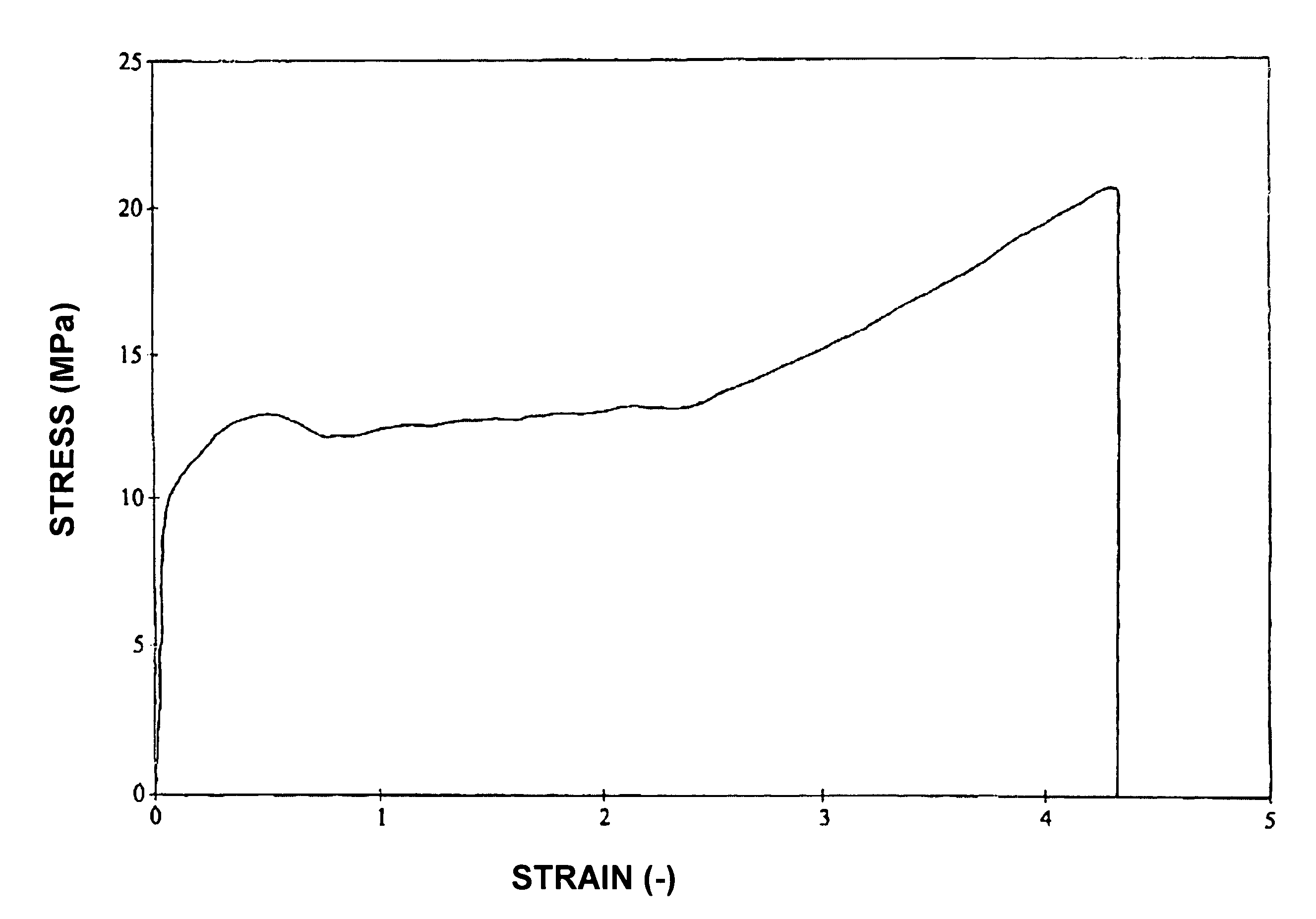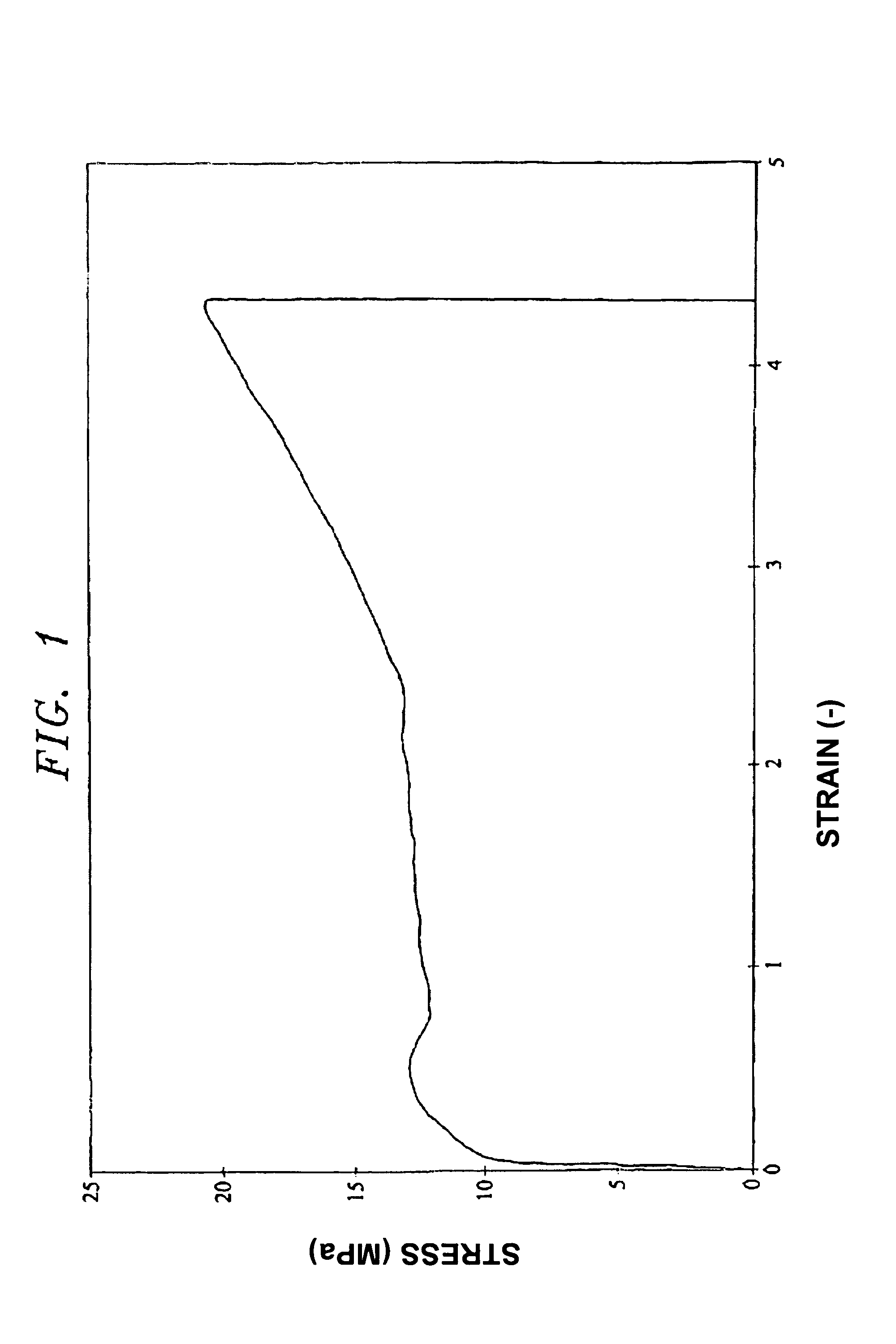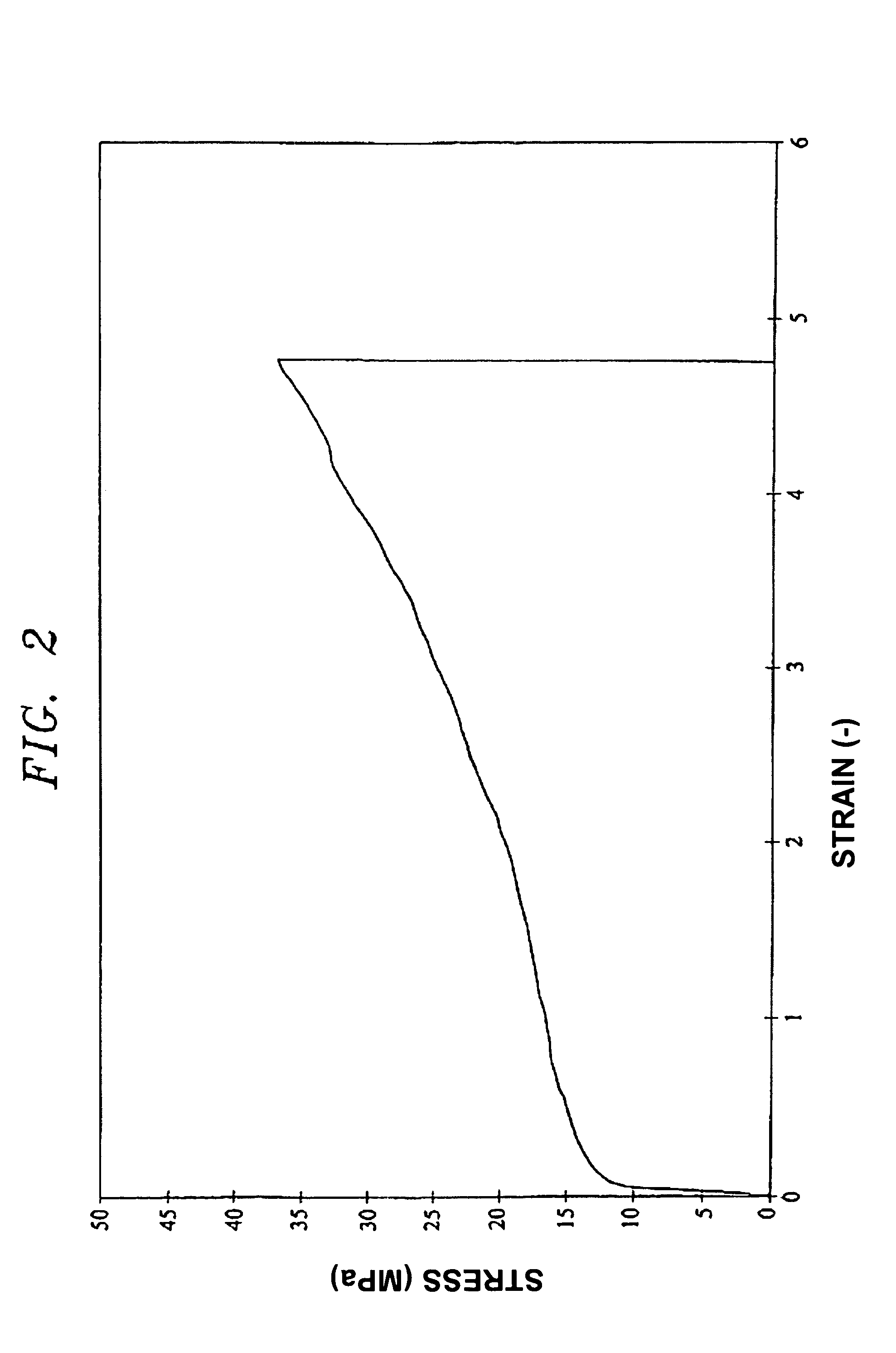Melt-processible poly(tetrafluoroethylene)
a technology of tetrafluoroethylene and tetrafluoroethylene, which is applied in the direction of chemistry apparatus and processes, synthetic resin layered products, transportation and packaging, etc., can solve the problems of reducing tensile strength, reducing the tensile strength, and the above methods are generally less economical than common melt-processing methods, etc., to achieve good mechanical properties, good melt stretchability, good mechanical properties
- Summary
- Abstract
- Description
- Claims
- Application Information
AI Technical Summary
Benefits of technology
Problems solved by technology
Method used
Image
Examples
examples
[0054]The following examples are given as particular embodiments of the invention and to demonstrate the practice and advantages thereof. It is understood that the examples are given by way of illustration and are not intended to limit the specification or the claims that follow in any manner.
General Methods and Materials
[0055]Melt-Flow Index. Values of the melt flow index (MFI) as discussed herein are determined in accordance with the ASTM Standard D1238-88 at a temperature of 380° C. and under a load of 21.6 kg during a maximum extrudate-collection time of 1 hr using a Zwick 4106 instrument.[0056]Viscosity. The absolute values of the complex viscosities of different PTFE grades were measured from small amplitude oscillatory shear experiments (Rheometrics Dynamic Spectrometer RDS-II) at 380° C. for several frequencies between 100 rad / s and 3.10−3 rad / s using standard plate-plate geometry. The linear range was estimated from strain-sweep experiments at 100 rad / s.[0057]Thermal Analys...
example 1
[0062]Example A was repeated with PTFE grades XIII–XVIII. The materials were melt-compression molded at 380° C. with a Carver press (model M, 25 T) for 5 min at 1 metric ton (t), 10 min at 10 t, and then cooled to room temperature during 4 min under 4 t into plaques of about 4×4×0.1 cm. These grades were found to yield mechanically coherent, and translucent samples that could readily be removed from the mold and bend without fracture. Mechanical testing of the plaques indicated that the strain at break of all samples exceeded 10%; typical values exceeded 250%.
example 2
[0064]Example B was repeated with PTFE grades XIII–XVIII. The materials were melt-compression molded at 380° C. with a Carver press (model M, 25 T) for 5 min at 1 metric ton (t), 10 min at 10 t, and then cooled to room temperature during 4 min under 4 t into thin films of about 15×15×about 0.025 cm. These grades were found to yield mechanically coherent, translucent and flexible films that could readily be removed from the mold.
[0065]The mechanical properties of the melt-processed PTFE films were measured according to the standard method detailed above. A typical stress-strain curve is presented in FIG. 1(A), for comparison purposes, together with that of a sample of commercial, pre-formed / sintered and skived film of 0.40 mm thickness (B). This figure shows that the melt-processed PTFE film (here of grade XVI (Table I)) has the typical deformation properties of a thermoplastic, semi-crystalline polymer with a distinct yield point and strain hardening. The stress-strain curves A and ...
PUM
| Property | Measurement | Unit |
|---|---|---|
| crystalline melting temperature | aaaaa | aaaaa |
| temperature | aaaaa | aaaaa |
| mol % | aaaaa | aaaaa |
Abstract
Description
Claims
Application Information
 Login to View More
Login to View More - R&D
- Intellectual Property
- Life Sciences
- Materials
- Tech Scout
- Unparalleled Data Quality
- Higher Quality Content
- 60% Fewer Hallucinations
Browse by: Latest US Patents, China's latest patents, Technical Efficacy Thesaurus, Application Domain, Technology Topic, Popular Technical Reports.
© 2025 PatSnap. All rights reserved.Legal|Privacy policy|Modern Slavery Act Transparency Statement|Sitemap|About US| Contact US: help@patsnap.com



